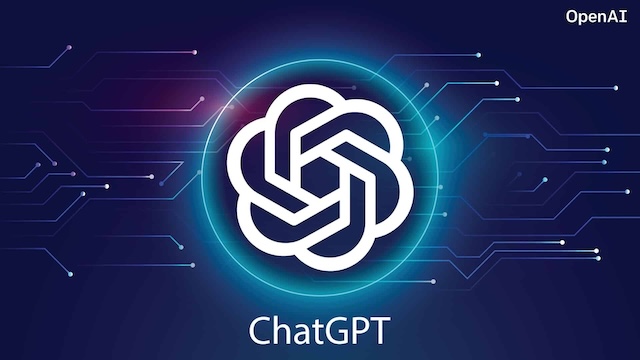By ATS Staff - February 9th, 2021
Artificial Intelligence Latest Technologies LLMs Machine Learning
Introduction
In recent years, artificial intelligence (AI) has made groundbreaking advances, with one of its most notable contributions being ChatGPT. Developed by OpenAI, ChatGPT is a natural language processing (NLP) model based on the GPT (Generative Pre-trained Transformer) architecture. Its ability to understand, generate, and engage in human-like conversations has revolutionized the way people interact with machines. This article will explore what ChatGPT is, how it works, its various applications, and its significance in the broader context of AI development.
What is ChatGPT?
ChatGPT is a language model designed to engage in text-based conversations. The model has been trained on vast amounts of textual data, enabling it to generate coherent and contextually relevant responses to user inputs.
Unlike traditional rule-based chatbots, which rely on pre-defined scripts and responses, ChatGPT uses machine learning techniques to analyze patterns in language. This allows it to respond dynamically and flexibly to a wide range of inputs, making conversations more natural and fluid.
How Does ChatGPT Work?
At its core, ChatGPT is built on a neural network architecture known as the transformer, which excels at tasks involving sequential data like text. The model is pre-trained on an extensive corpus of text, including books, websites, and various other textual sources, to learn the structure, grammar, and nuances of human language. This pre-training phase helps the model develop a vast understanding of language.
After pre-training, the model undergoes a fine-tuning phase where it is optimized for specific tasks, such as answering questions or maintaining coherent dialogue. This involves human feedback, where responses generated by the model are ranked, and the highest-quality responses are used to fine-tune the model’s behavior.
Key Mechanisms in ChatGPT:
- Tokenization: The input text is broken down into smaller units called tokens, which the model processes sequentially.
- Attention Mechanism: The transformer architecture uses an attention mechanism to focus on different parts of the input text when generating responses. This allows it to handle long-range dependencies in language, making its responses more contextually accurate.
- Contextual Understanding: ChatGPT retains the context of a conversation, allowing it to follow the flow of dialogue and generate relevant answers even when asked follow-up questions.
Applications of ChatGPT
- Customer Support: ChatGPT has been integrated into various customer support systems to provide real-time assistance to users. Its ability to handle frequently asked questions, troubleshoot issues, and engage users with personalized responses has made it a valuable tool for businesses.
- Education: Educators and learners use ChatGPT to generate explanations, solve problems, and provide study assistance. It acts as a virtual tutor capable of delivering customized learning experiences to students across different subjects.
- Content Creation: Writers and content creators can use ChatGPT to generate ideas, draft content, or enhance existing text. Its ability to generate text quickly and with varying tones, styles, and formats makes it a useful resource for copywriting, marketing, and creative writing.
- Healthcare: In the healthcare sector, ChatGPT has been employed to assist patients by providing information about medical conditions, treatments, and lifestyle changes. Although it is not a replacement for professional medical advice, it can offer preliminary guidance.
- Entertainment and Gaming: ChatGPT has been incorporated into video games, interactive stories, and other forms of digital entertainment. It can be used to create engaging characters that adapt and respond to players' decisions, enhancing user experience.
Ethical Considerations and Challenges
Despite its incredible capabilities, ChatGPT presents certain challenges, especially in areas such as ethics and safety. Because the model is trained on vast amounts of data from the internet, it may occasionally generate inappropriate, biased, or harmful content. Efforts have been made to minimize such outputs through filtering, moderation, and continuous model improvements.
- Bias in Responses: Since ChatGPT learns from publicly available data, it can sometimes mirror the biases found in those data sources. This raises concerns about fairness and the potential for reinforcing harmful stereotypes.
- Misinformation: ChatGPT can generate convincing but incorrect or misleading information. Users must be aware that, while the model can provide useful insights, it may not always produce accurate facts.
- Data Privacy: ChatGPT’s reliance on large datasets raises concerns about privacy and data security. It is important to ensure that the training data does not include sensitive information that could be inadvertently exposed.
The Future of ChatGPT
The evolution of models like ChatGPT points to a future where AI plays an increasingly central role in daily life. With ongoing advancements, the conversational abilities of these models will only improve, making them more intuitive, responsive, and capable of handling complex interactions.
Some of the future developments might include:
- Improved Contextual Awareness: Future iterations of ChatGPT may enhance their ability to understand complex contexts, allowing for more sophisticated conversations.
- Better Integration with Other Systems: ChatGPT could be integrated into more applications and services, enabling seamless interaction between humans and machines across various platforms.
- Ethical Safeguards: As awareness of the ethical challenges grows, future models will likely include more robust safeguards to prevent harmful outputs and ensure responsible AI usage.
Conclusion
ChatGPT is a powerful example of how AI is transforming human-machine interactions. By leveraging sophisticated NLP techniques, it provides engaging, dynamic conversations and offers solutions across numerous industries. As its capabilities expand and ethical concerns are addressed, ChatGPT and similar technologies have the potential to reshape the way we communicate, work, and learn in the digital age.
Popular Categories
Agile 2 Android 2 Artificial Intelligence 50 Blockchain 2 Cloud Storage 3 Code Editors 2 Computer Languages 12 Cybersecurity 8 Data Science 15 Database 5 Digital Marketing 3 Ecommerce 3 Email Server 2 Finance 2 Google 6 HTML-CSS 2 Industries 6 Infrastructure 3 iOS 3 Javascript 5 Latest Technologies 42 Linux 5 LLMs 11 Machine Learning 32 Mobile 3 MySQL 2 Operating Systems 3 PHP 2 Project Management 3 Python Programming 26 SEO - AEO 5 Software Development 44 Software Testing 3 Web Server 7 Work Ethics 2